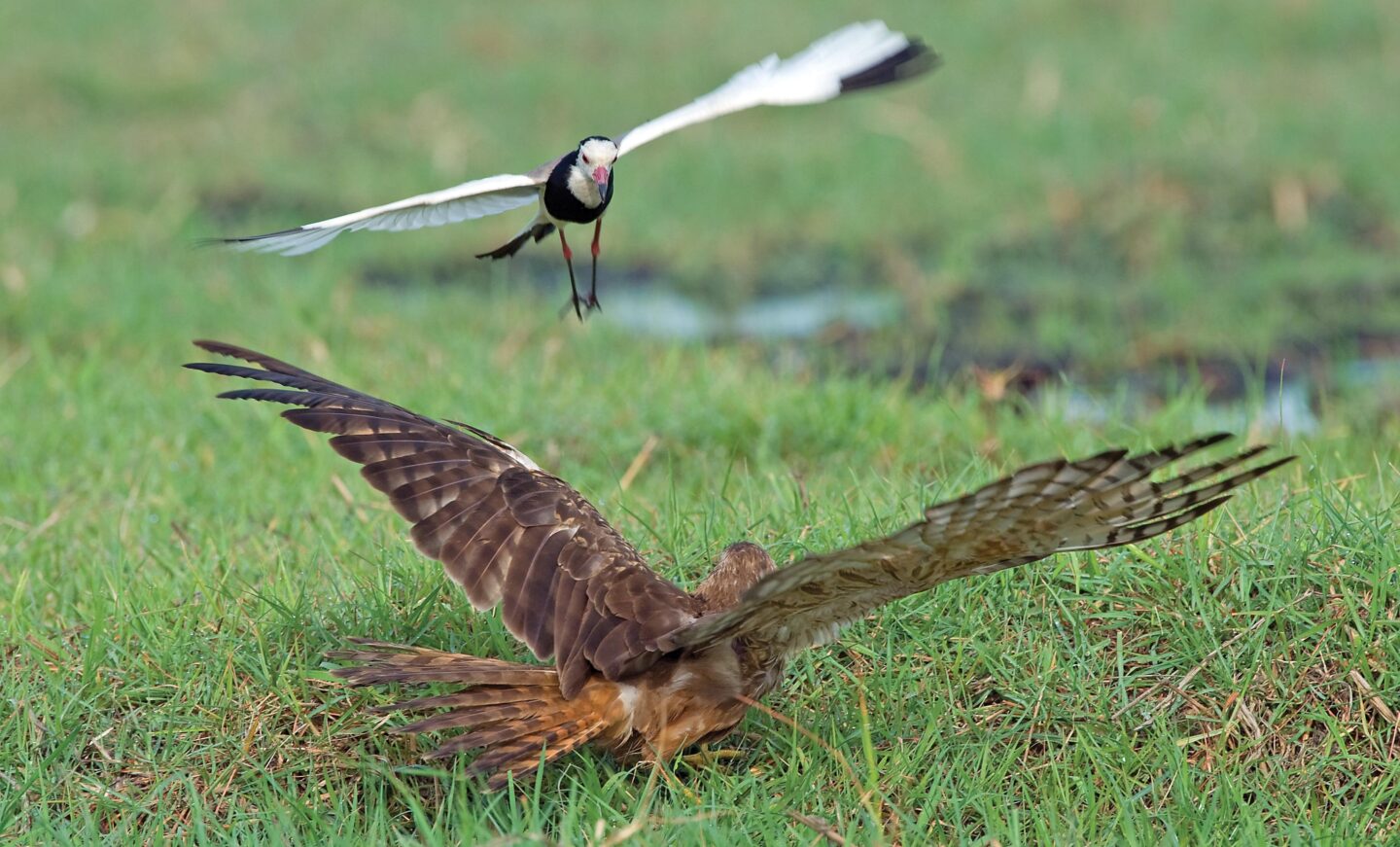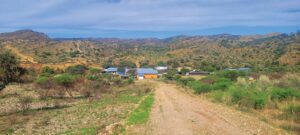

Lapwings and Plovers
Corgis are highly alert dogs, they react to any sound by barking. They are fearless, aggressive and excellent watch dogs, reacting by sounding the alarm for almost everything. Unfortunately it barks at almost anything, which can get annoying. They also become destructive, chew on furniture or other forbidden things. Separation anxiety can occur when not saying goodbye, and barking all day, getting on everybody’s nerves, is a well known trait. Not unlike the Lapwing…
Text Pompie Burger | Photographs Pompie Burger
From the Autumn 2022 issue
Similarities between Corgis and Lapwings: they are both highly alert and react to any sound or disturbance. They are fearless, even attacking elephant herds about to tread on their eggs. Unfortunately, they scream at almost anything, which can get annoying. But Lapwings do not become destructive, chew furniture or forbidden things. Separation anxiety is not known to Lapwings when not saying goodbye, but their loud calls all day long can also get on everyones nerves.
Why is there a problem with differentiating between Plovers and Lapwings? Some clever scientist decided that they should be separated into Charadrius and Vanellus families, which used to be all Charadriidae. Interestingly, Charadrius means Plover in Greek and Vanellus means – yes, you have guessed correctly – Plover, but in Latin. The problem is they do look markedly different. Plovers, compared to Lapwings, are much smaller, short-legged and short-necked, and they are ringed. Incidentally lapwing refers to the erratic flight pattern leaping from side to side. Apparently, Lapwings are reluctant to wade, and prefer running when feeding, but their eggs look remarkably the same.
There are collectively 63 species worldwide, with 5 Lapwing species and 11 Plover species in Namibia. They occur all over the world, except in frozen areas or very dense vegetation (forest). Their plumage colours are a combination of black, white and olive grey, which helps with camouflage (disruptive effect) pretty much as in the case of zebras. If by now you still do not know what a Lapwing is: they have bare skin around their eyes, some have facial wattles and compact carpometacarpal knobs or spurs.
My favourite lapwing by far is the White-crowned Lapwing (Vanellus albiceps), mainly because of its temperament, being extremely hardegat, but also because it is a rather rare and special species in Namibia, isolated in the Zambezi Region. One of their favourite habitats is near Mubala Lodge right next to the very famous, and often visited by me, Carmine Bee-eater breeding area. Visiting the Carmines, I must drive past the Lapwings, and to be confronted by them every time on my way there is usually a very petrifying experience, but also very exciting. Incidentally, they are one of the two Lapwing species with a yellow wattle, which with their almost white eyes adds to their ferocious look. More importantly they have the most impressive spurs of all, which just shows that their attitude is backed by the necessary weaponry.
Second in line is the Long-toed Lapwing (Vanellus crassirostris), in this case because of its distribution, again special to the Zambezi Region, and they are very uncommon. Their main attractions are their red eyes and long toes, an adaptation for meandering on floating vegetation along rivers and floodplains, spreading their weight over large areas, pretty much like the African Jacana. Because of the habitat, they prefer aquatic insects as well as small snails. They often feed along Spur-winged Geese which disturb the vegetation for them to gain access to food.
The African Wattled Lapwing (Vanellus senegallus) is also a rather special species as far as southern Africa is concerned, but it is more widespread than the first two. They, like me, prefer the Zambezi Region. This species is the other wattle bearer, but in addition it has a red base to the wattles. Its other remarkable difference to the other Lapwings is its streaked neck. It also prefers waterlogged or moist short grassland.
If by any chance you have not seen or heard a Blacksmith Lapwing (Vanellus armatus), you are either hard of hearing or should go and see (hear) your ophthalmologist. These Lapwings are extremely common and found in almost any habitat all over Namibia, apparently adapted to man-made habitats like sports fields, usually supporting Namibian teams in their quest for fame. They are the most gregarious, like all the other lapwings especially during the non-breeding season. Equally common is the Crowned Lapwing due to its adaptability to almost all different kinds of habitats. These birds also support Namibian sports teams, especially cricket. Both of the above prefer insects, worms and other invertebrates.
As far as the Lapwings’ similarities with Corgis are concerned, the main ones are their vocal abilities. All of them share a rather (extremely) loud, incisive, high-pitched, piercing call. Apparently, crocodile hunters swear that this call warns crocodiles to take to the water. As far as aggressiveness is concerned, they fear nothing, not even elephants which they will remove from their breeding area without trepidation.
As for the struggle amongst the scientists/ornithologists about which are Lapwings, and which are Plovers, I will leave it up to you. In any case, I will include a picture of a Plover just to make it a bit easier for the reader to make up his mind.
As far as Corgis’ alertness is concerned, during a burglary at my house, while I was fighting off the burglar, my two Corgis appeared almost 10 minutes after the wrestling match started, quickly lost interest in the situation, and left the scene of the crime after a few minutes to go back to the warmth and comfort of their bed. TNN






